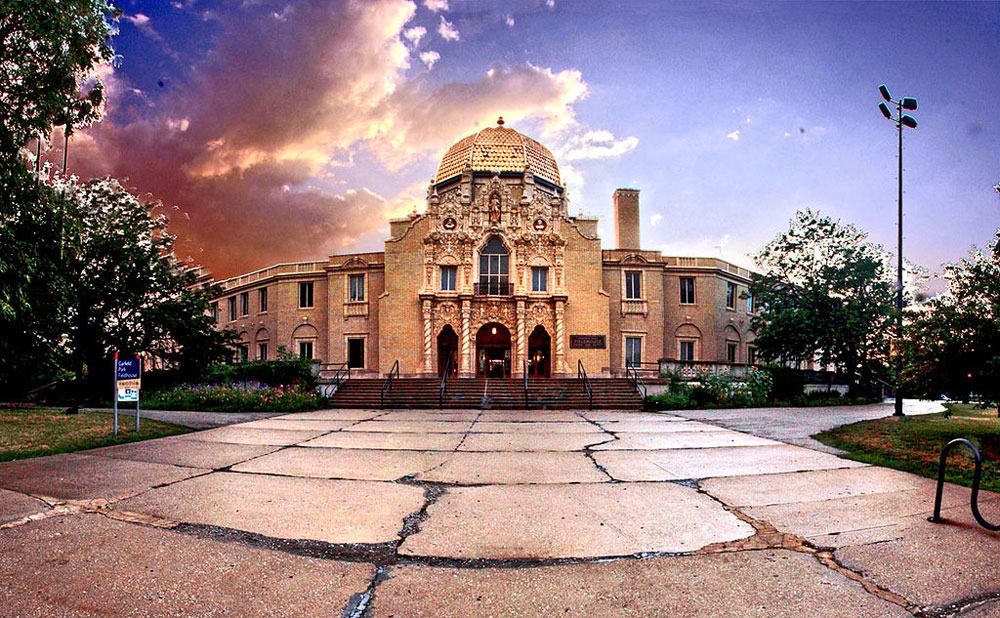
November 11, 2020; ProPublica
Chicago proudly describes itself as a city of neighborhoods. East Garfield Park, just west of the city’s economic core, provides a stark reminder of the unfinished work ahead in redressing the human cost of redlining, “white flight,” and systemic racism. Just minutes from rows of gleaming skyscrapers, newly built high-rise condominiums, and trendy restaurants sits a neighborhood lying fallow, awaiting its time. Vacant lots where once thriving businesses opened their doors tell a story of this place, like many across the country, where demands for restitution sit unanswered.
At this moment, East Garfield Park has a story we need to hear.
Annette Britton, vice president of a community group called the Garfield Park Neighborhood Network, depicts her neighborhood’s reality in comments reported by ProPublica. “This was a working-class community with businesses,” she says. “All of that has been stripped away.” Thinking about what this means for the neighborhood’s children, she notes, “Their little eyes are absorbing all of this and they think, ‘This is what’s normal.’ That’s so sad to me.”
Since the launch of Lyndon Johnson’s war on poverty, there have been a stream of efforts to address the challenges of neighborhoods like East Garfield, neighborhoods shaped by market forces that saw little value in neighborhood reinvestment.
Wave after wave of programs came—backed by federal, state, and local monies—but they lacked two things: a basic understanding of the comprehensive scope of the problems, and a commitment to spend enough to succeed.
Piecemeal allocation of funds shored up individual city departments and struggling nonprofit organizations and tried to entice new commercial investments. Missing was a comprehensive strategy: “Revitalizing neighborhoods requires a coordinated strategy of training the workforce, improving housing, recruiting businesses, and fighting crime,” observe Tony Briscoe, Haru Coryne, and Mick Dumke in ProPublica.
Attention was focused on property, rather than the lives of residents. Clearing out abandoned buildings was quicker than finding new and restorative ways to use them. According to Rep. Danny Davis (D-IL), who was formerly the neighborhood’s alderperson, “When the population base moved away, there was nothing to support a commercial strip… much of the economy of these areas went with them, and government really didn’t do much to stop it—no unit of government. It just never happened.”
The efforts turned out to be too scattered, too small, and too susceptible to shifting politics to make a lasting impact. Over and over, the government programs failed to bring investment.
Sign up for our free newsletters
Subscribe to NPQ's newsletters to have our top stories delivered directly to your inbox.
By signing up, you agree to our privacy policy and terms of use, and to receive messages from NPQ and our partners.
Maurice Cox, the commissioner of the Chicago’s Department of Planning and Development, recently explained to ProPublica that each new plan was “a policy of urban removal without a companion strategy for the renewal of those neighborhoods.”
“How do we clear the blight?” “How do we eliminate the problem?” I would dare say they had no solution for how to repopulate the areas. And this has gone on for decades—not only in Chicago but across the country.
Or, as Wallace Goode Jr., who was executive director of the city’s Empowerment Zone program from 1999 to 2004, explains, “It’s fingers in a dike…there are multiple holes leaking water, and you need to plug them all at the same time.”
Last month, NPQ highlighted the need to make room for community voices and local developers and homeowners to change this pattern of abandonment and failure, seeking investments made, as community-based developer and leader Asiaha Butler, says, “with us and not for us.”
This is a message heard coast to coast. As Margaretta Lin, executive director of the California-based nonprofit Just Cities, explains to Next City, “City governments, historically and today, are really bad at planning with people.” As city planners working on a citywide plan to deal with traffic safety in Oakland found, low-income communities may see the situation as more than just about controlling car speeds and bicycles. Warren Logan, policy director for mobility and interagency relations, says:
One of the key areas of feedback, particularly for many residents in East Oakland, was that we had missed the mark. They understood why slow streets might be helpful for people working at home who are more affluent or don’t necessarily have the same traffic challenges that they might have. But the residents there felt like the city should—if they’re going to focus on anything in East Oakland—be focused on helping people get to their essential places, whether that’s health clinics, to schools that were distributing food, to grocery stores.
Rikha Sharma Rani, writing for Next City, says, “The disconnect revealed a stark reality: For many marginalized communities, engaging with cities on urban policy is akin to screaming into a void.”
Shacarra Westbrooks grew up in East Garfield Park and wishes to see it flourish once again. Her master’s thesis focused on why the community never recovered from the riots that followed the assassination of Rev. Martin Luther King, Jr. For her, this neighborhood is home. “I wanted to invest back into the community, because there’s so much history, so much culture and so much love. I drive around sometimes and it’s so desolate—even from when I was growing up—it’s sad. But I said, ‘I’m not going to give up on the West Side of Chicago.’”
Voices like these in the community await government and private investors ready to invest in efforts made by their community. Plans already exist, like one drawn up by a local organization, “filled with architectural renderings of shops…with residences above them [and] Black-owned development firm for construction.” What’s absent is political support, the willingness to stand behind local voices and take risks with them. Decades of failure tell us it’s time to try a new approach.—Martin Levine












